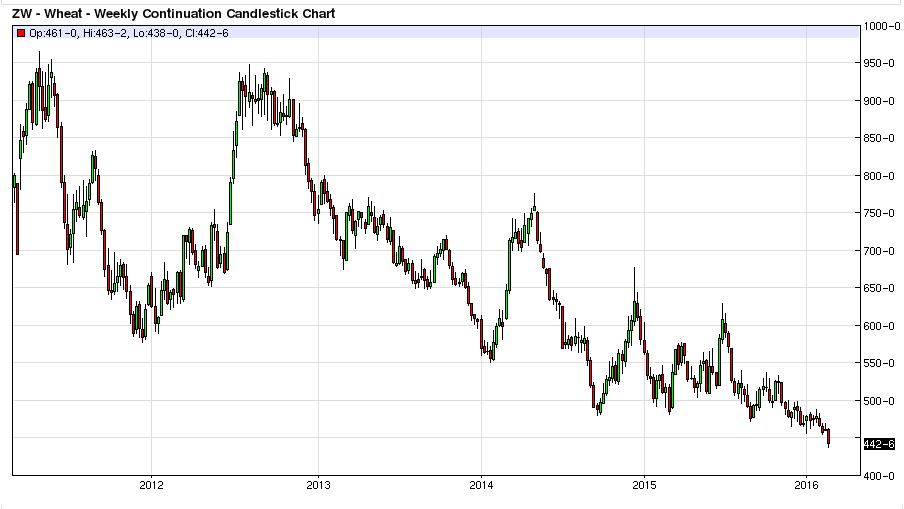One of the most devilish conundrums faced by traders is what to do when an instrument they are following gives a valid signal but this signal is either at an all time high or low. Such a situation has recently occurred with wheat, which according to my system gave a valid sell signal as it moved to a new low.
The rues that govern trading often run counter to the rules that seem to govern the rest of society – in our daily lives we seem to have a built in barometer of what we think things are worth. This barometer is generally correct in our daily lives. For example, we know that if on Wednesday we walk into our local baker and the price of a loaf of bread has risen from $5.00 to $15.00 that we are being ripped off. Our value scale in this instance has worked. Similarly, if we walk into a car yard and see a car advertised for a fraction of its value we know that something strange is going on and all sorts of alarm bells go off.
Yet, in trading this inbuilt sense of the economics of life is useless.Granted, there are people who think they know what something is worth and they generate all manner of models and hyperbole to justify this judgement. They make the mistake of believing that the market is somehow listening to their internal narrative. These are the sort of people who are convinced that oil is worth $100 a barrel and that the market is just wrong. The only value in trading that is true and correct at all times is the value given to something by the market. You will often hear statements along the lines that the market market is incorrect in its assessment of the value of something. As a basic principle the market can never be wrong – if we assume that the market is a synthesis of all opinions and knowledge then the price and trend it sets for an instrument is correct and anything else is simply titling at windmills.
As a basic rule we have no ides how high or how low prices will go.








Perfect timing on your article Mister Tate – There are a bunch of stocks from the ASX200 that came up in my scans that have, or are about to hit a new long term high or low. The above is a good reminder to develop some testicular fortitude and trust your system.
Well with commodities isn’t the minimum pretty much the production cost? When it’s below production cost they just stop producing it and the supply/demand pushes the price up again.
Hi David, you make a logical point but the market is not always logical.
One recent example is the price movement of oil.
Its not always this straight forward. Production costs have fixed and variable components. There is often an argument for continuing to produce so long as the variable costs are exceeded – as this gives some contribution to the coverage of fixed costs. Add in the complexities of existing stockpiles (or crops already planted), plus price hedging and it becomes almost impossible for an outsider to predict where such a cut off would exist.
The production cost of oil has for some time been above the current market price yet they keep pumping it out of the ground,
Thanks Chris
Thanks for the comments. Interesting. The market is never wrong.